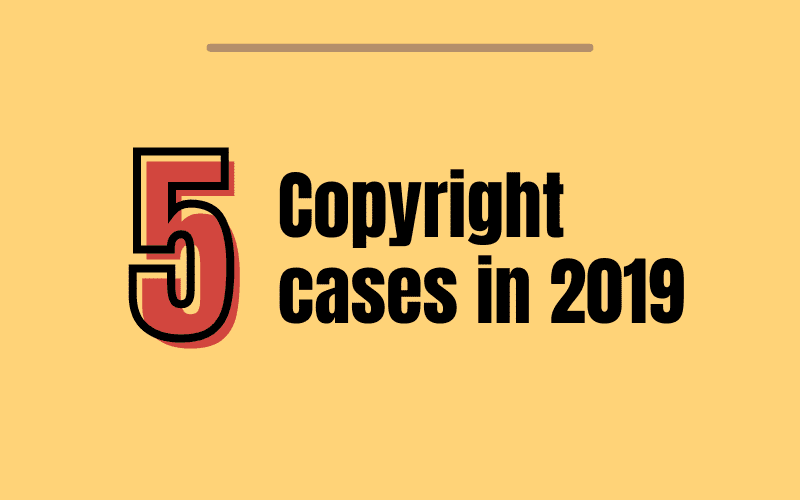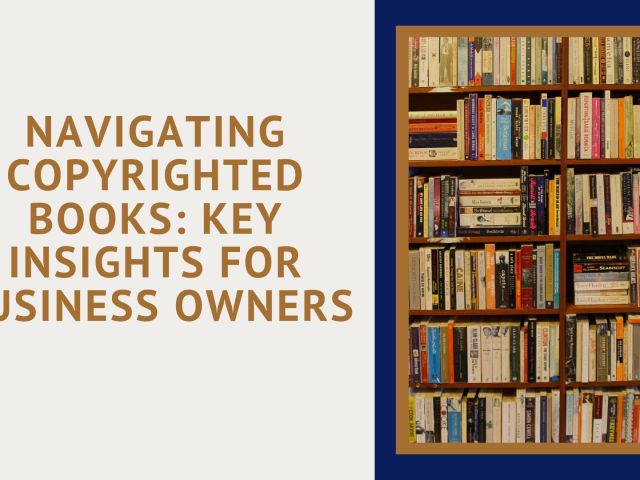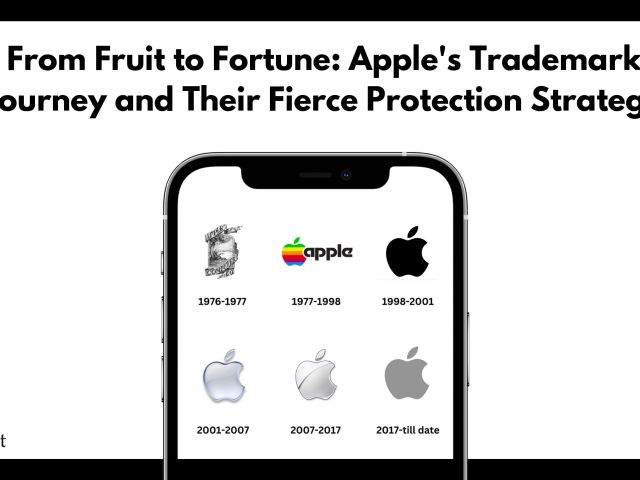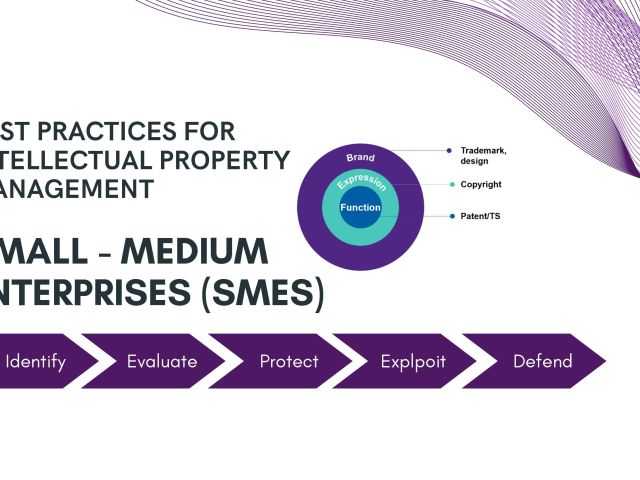Top 5 Copyright Cases in 2019
1. Sajeev Pillai v. VenuKunnapalli & Anr
Issue:
Does the author of work, even after the assignment of work, have special rights to claim authorship of his work provided under Section 57(1) of the Copyright Act?
Facts:
The appellant, Sajeev Pillai, a film director, and a scriptwriter, claimed to have researched the history of the grand festival Mamankam and prepared a script for a movie based on the same epic. He met VenuKunnapalli and signed an MoU with Kavya Film Company which was associated with Kunnapalli. Sajeev was initially appointed as the director, but his service was terminated and replaced by someone else. The movie’s shooting was after that completed, which Sajeev alleged was done by mutilating, distorting, and modifying his script. Sajeev, in light of that, filed a suit seeking various reliefs. An interim injunction application was filed to restrain the respondents from releasing, publishing, distributing, and exploiting the film and issuing pre-release publicity without providing good authorship credits to Pillai as per film industry standards.
Judgment:
In deciding the issue, the Court noted that the first sub-section of Section 57(1) provides the author to restrain third parties. The second sub-section provides the author the entitlement to claim damages by such a third party for any distortion, mutilation, or other modifications to his work or any other action that would be prejudicial to his honor or reputation. This provided the appellant an unparalleled advantage in the case and that his copyright assignment of the work would not exhaust the legal right to claim authorship over it.
2. Tips Industries v Wynk Music
Issue:
Does a statutory licensing scheme exist under the Copyright Act for online streaming services?
Background: The dispute centers around section 31D of the Copyright Act, 1957, which provides for a statutory licensing scheme, whereby any ‘broadcasting organization’ desirous of ‘communicating to the public’ any sound recording can obtain a statutory license to do so provided they pay royalty rates to the copyright owners at rates fixed by the Intellectual Property Law Board.
Facts:
Tips Industries Ltd (Plaintiff) is an Indian music label that exercises copyright over a significant music repository that, in 2016, granted Wynk Music Ltd (Defendant) a license to access this music repository. At the expiry of the said license, both parties attempted to renegotiate the licensing conditions. Still, they failed to do so; hence, Wynk took refuge by invoking Section 31D of the Copyright Act. Tips challenged Wynk’s invocation of Section 31D and prosecuted Wynk according to Section 14(1)(e) for breach of their exclusive sound recording rights.
Judgment:
After hearing the contentions of both parties, the Bombay High Court found Wynk guilty of direct infringement on two counts – 1. To offer the copyrighted work under section 14(1) (e) (ii), which allowed the users to download and listen to the plaintiff’s work offline, and 2. Under section 14(1) (e) (iii) for communicating the plaintiff’s works to the users via their streaming service.
In addition to that, the Bombay High Court sought this opportunity to clear out the air regarding the ambiguity that existed concerning online streaming services falling within the scope of Section 31D:
1. Under Section 31D of the Copyright Act, the’ Download / Purchase ‘ of copyrighted works is not covered.
Wynk Music allowed the users to download and store copyrighted music for unlimited future use, which is instituted to be a ‘sale’ and not ‘communication made to the public,’ which constitutes a ‘broadcast’ for Section 31D. Hence, there is no claim for a statutory license for using such copyrighted work by Wynk Music.
2. The application of Section 31D of the Copyright Act does not include Internet broadcasting.
The defendant’s case was based primarily on the presumption that Section 31D covered Internet streaming services under’ radio broadcasting’ as described in a 2016 DPIIT office circular, given that’ radio broadcasting’ included’ internet broadcasting’ under Section 31D.
The Court had an opposing view which resulted in the rejection of the interpretation put forth by the defendant.
The Court found Section 31D to be an exception to copyright, which should only be strictly interpreted. Upon careful examination of the statutory scheme of 31D and the rules accompanying it, it becomes apparent that statutory licensing was intended only to cover radio and television broadcasting and not internet broadcasting. After examining the history associated with Section 31D, the Court derived that, despite the global existence of internet streaming services when the Section was inserted through an Amendment Act of 2012, the legislation, even though aware of it, omitted to include internet streaming services from the ambit of Section 31D.
In addition, the memorandum presented by the defendant does not contain any additional weightage of their claim as a memorandum only acts as ‘guidelines’ and lacks statutory authority and therefore has no influence to the extent of their claim.
The judgment was passed in favor of the plaintiff, and the Court held that the plaintiff was entitled to an interim injunction, having regard to the reality that they had made a prima facie case, and would suffer irreparable harm in the way of lost revenue.
3. Raj Rewal v Union of India &Ors
Issue:
Whether an Architect, as the creator and legally the ‘author’ of a structure, has a right vested in him to object to such modification or demolition of their work by the owner of the building?
Background: The dispute centers around section 57 of the Copyright Act 1957, under which the plaintiff has filed for a mandatory injunction to reinstate the building according to the original plans. Section 57 of the Copyright Act 1957 provides the author with special rights called ‘moral rights,’ which exists with the author of the work over and above the economic rights of others.
Facts:
The present case concerns Mr. Raj Rewal, who designed and Mr. Mahendra Raj, who was the structural designer of the Hall of Nations building. The said building was hailed as an icon of modernist Indian architecture and was erected on the Pragati Maidan grounds in New Delhi. The ITPO, in 2016, proposed to demolish the Hall of Nations complex to build an ‘Integrated Exhibition cum Convention Centre.’ Despite several attempts made by Plaintiff to protect the building from demolition, it resulted in what ITPO desired. Post demolition of the building, Plaintiff instituted a suit against the actions of ITPO by claiming that the acts of demolition had derogated Plaintiff’s special rights under Section 57.
Judgment:
Rejecting the plaintiff’s claims, the Court framed the issue as a conflict of two different rights: the architect’s rights under Section 57 and the landowner’s rights to practice acts about their property.
The Court observed that the plaintiff, in this case, cannot be allowed to prevent the demolition of the building by the defendant as it would, in turn, amount to a restriction of the defendant’s right to practice their control over their property and land which is provided to them under Article 300A which is a constitutional right which prevails over the statutory rights of the plaintiff which they claim to exist under Section 57 of Copyright Act, 1957.
The Court further states that the author’s right under Section 57 to prohibit ‘distortion, mutilation or modification of his work does not permit an author to prevent the destruction of their work since “that what cannot be viewed, seen, heard or felt, cannot be imperfect and cannot affect the honor or reputation of the author.”
Therefore, the extent to which the right vested in the architect extends is to prevent the building owner from refraining from making changes in the design made by the architect and passing it off as if the architect made the design.
Further, the Court also relied upon Section 52(1)(x), an exception to the architect’s copyright. The Court reasoned that the ‘reconstruction’ envisaged under Section 52(1)(x) could only occur if the building had already been demolished. Noting that the Copyright Act must be read harmoniously, the Court stated that Section 57 could not reasonably contemplate the right to object to demolishing a building.
In conclusion, the Court dismissed the suit due to a lack of cause of action against the demolition of the Hall of Nations.
4. YRF v Sri Sai Ganesh Productions
Issue:
Whether copyright can exist in a cinematography film independent of the underlying works that it is comprised of? 2. Does the expression under section 14 to ‘make a copy of the film’ mean making a physical copy only? And between the two films, is there a substantial and material similarity?
Facts:
A copyright infringement suit was filed against Sri Sai Ganesh Productions &Ors by Yash Raj Films Pvt Ltd on the grounds that it blatantly copied the movie Band Baja Baarat produced under the YRF banner and producing Jabardasht which showcased substantial and material similarities in terms of theme, concept, plot, character, sketches, story, script, form and expression amongst other things.
Judgment:
The Court, while determining the first issue, relied on the judgment handed down by the Delhi High Court in the case of MRF Limited v. Metro Tyres Ltd, in which the Court held that copyright exists in the ‘cinematographic film’ independent from other underlying works that come together to constitute it and that there is a requirement of originality to exist in ‘cinematographic films’ which can be read into from Section 13(1)(b) of the Copyright Act, 1957 through Sections 13(3)(a) and 2(d) of the said Act even though it has not been explicitly mentioned.
The Court, while determining the second issue, held that the expression ‘to make a copy of the film’ provided in Section 14(d)(i) of the said Act does not simply mean creating a physical copy of the film by process of duplication. Furthermore, as the movie are protected just like original works, the Court extended the test of originality set out in the case of R.G Anand v. Deluxe Films to distinguish between the two films based on ‘substance, foundation, and kernal’ and understand the viewpoint of an average moviegoer as to whether they would have an unmistakable impression that one work was a copy of the other.
In the instant case, the Court found that the defendants had blatantly copied the plaintiff’s film’s fundamental, essential, and distinctive features.
5. UTV Software Communication Ltd., v.1337X.TO and Ors
Issue:
How should the Court deal with the hydra-headed ‘Rogue Websites’ which, on being blocked, eventually multiply and resurface as redirect or mirror or alphanumeric websites?
Facts:
UTV Software Communications Ltd (Plaintiff)., is one such company engaged in creating, producing, and distributing cinematographic content worldwide. The plaintiff has brought a suit against thirty identified websites, multiple John Doe defendants, the Ministry of Electronics and Information Technology, the Dept of Telecom, and various ISPs. The plaintiff’s contention was based on the fact that the defendant’s websites host and provide access to their copyrighted content which infringes their rights derived from the Copyright Act 1957.
The plaintiffs provided access to a sample of such infringing content as evidence that the websites were primarily engaging in online piracy. Most websites did not respond to the summons because they were hosted outside India. Due to that, an amicus curia was appointed in their place as the issue was about to be a question of law of general public importance.
Judgment:
The most notable contribution this case made was that it introduced a new procedure to extend website blocking injunctions beyond those specified in the court order but also to those websites which are ‘mirror/alphanumeric/redirect’ websites created after the Court already passed the injunction order. This extension was termed a ‘dynamic injunction.’ Singapore High Court’s decision in Disney v M1 was referred by the High Court of Delhi while deciding on the issue where their Court introduced the concept of ‘dynamic injunction’ whereby a plaintiff could file an additional affidavit stating to the Court why a new website fell within the purview of an existing blocking order and forwarding the same to an ISP, which could dispute the merits of the blocking order. This process would help curtail piracy by such ‘Rogue Websites’ and reduce the burden on the copyright owners to go through the challenging route of litigation over and again.




